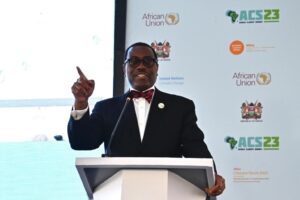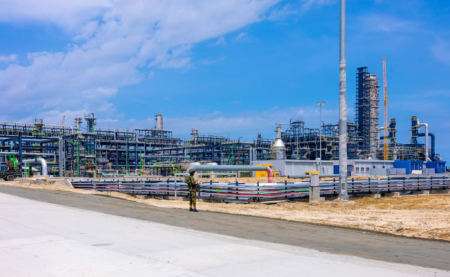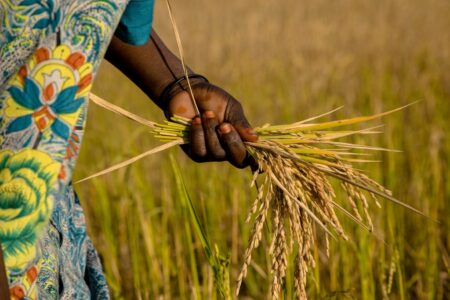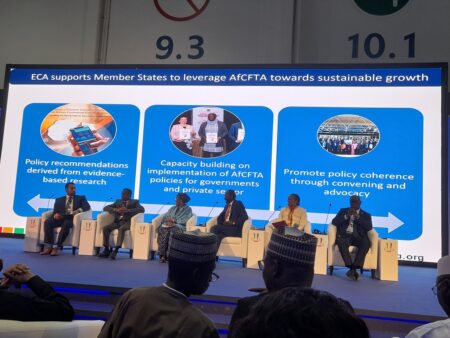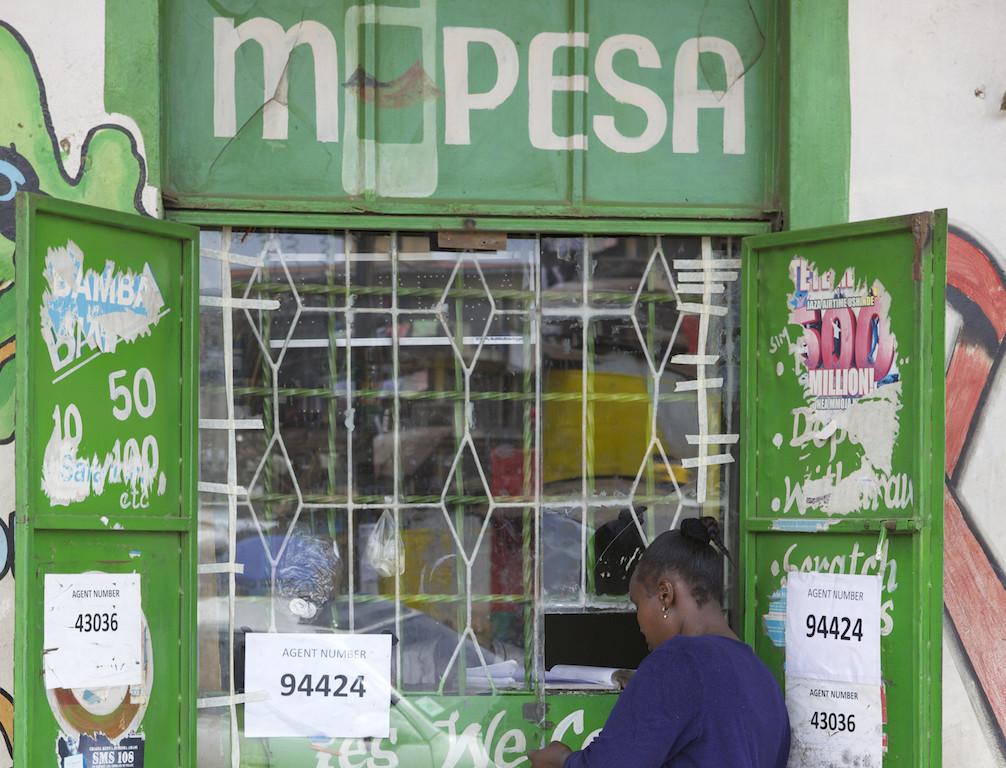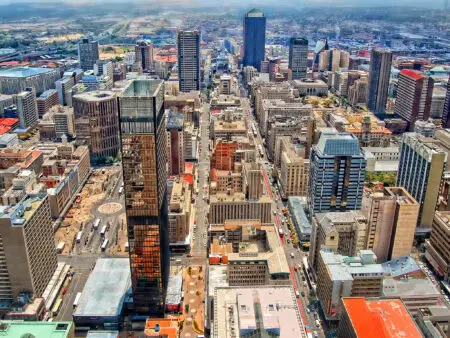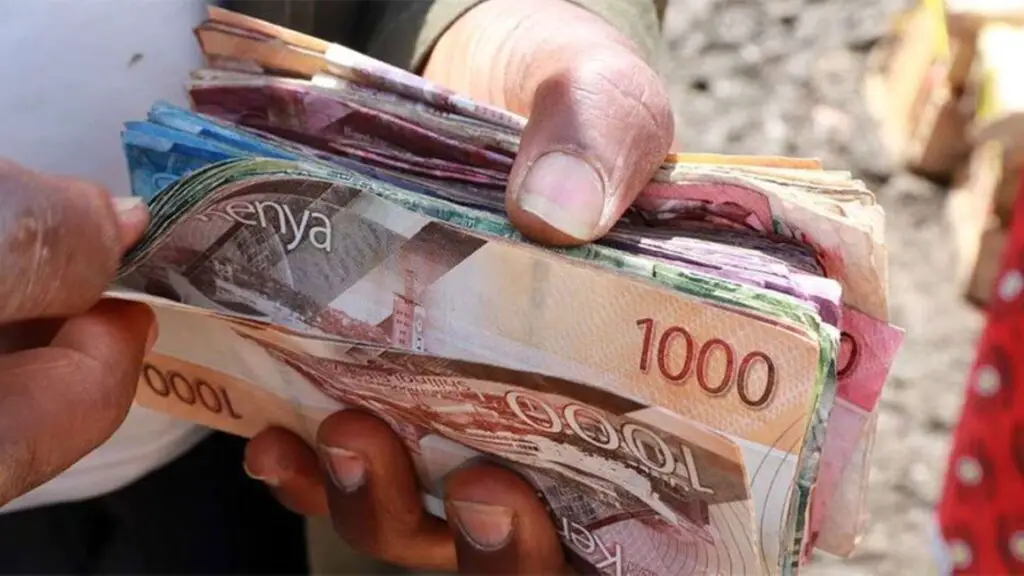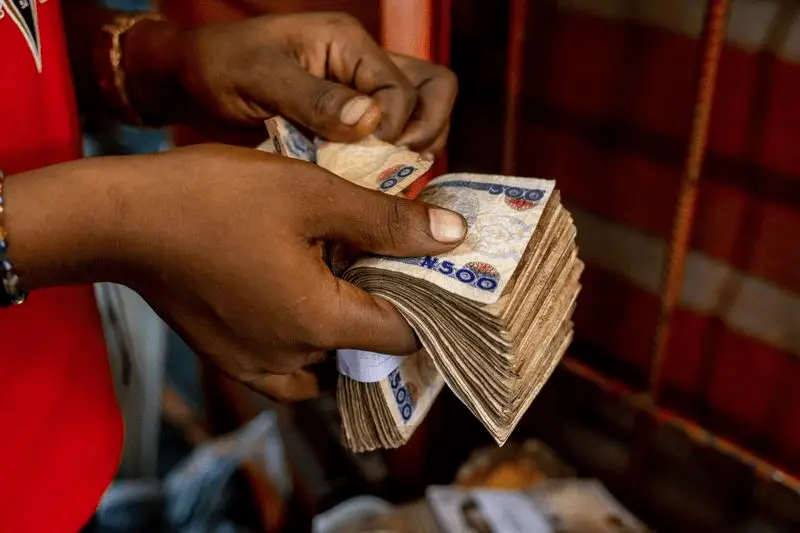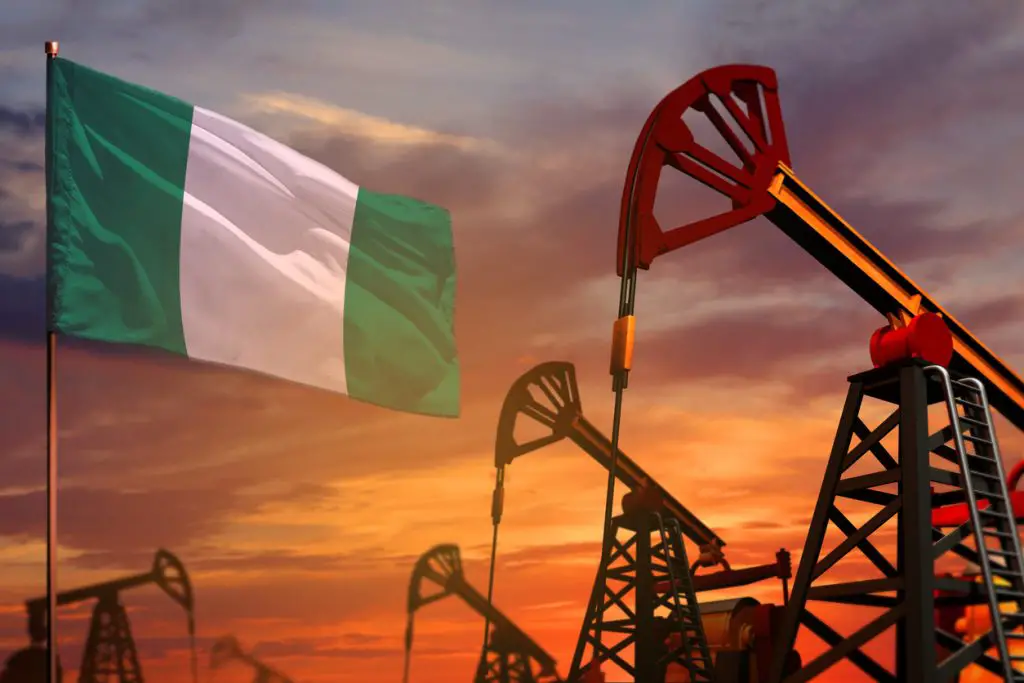- Abu Dhabi radiates optimism as over 300 startups join AIM Congress 2024
- TLcom Capital Raises $154 million in Funding to Boost Its African Growth
- Africa’s $824Bn debt, resource-backed opaque loans slowing growth — AfDB
- LB Investment brings $1.2 trillion portfolio display to AIM Congress spotlight
- AmCham Summit kicks off, setting course for robust future of US-East Africa trade ties
- Why the UN is raising the red flag on the UK-Rwanda asylum treaty
- Portugal’s Galp Energia projects 10 billion barrels in Namibia’s new oil find
- Wärtsilä Energy offers tips on how Africa can navigate energy transition and grid reliability
Browsing: Nigeria
The Nigerian government has taken various steps to address the persistent fuel shortages, including rehabilitating the country’s refineries, the establishment of new refineries, and promoting private sector investment in the downstream sector. However, progress has been slow, and the problem persists. However, the Dangote oil refinery’s boost to Nigeria’s oil refining capacity should help the government in its quest to address the persistent fuel shortages and end the energy sector crisis.…
- Nigeria has commissioned the large-scale Integrated Rice Mill to expand domestic rice production and achieve self-sufficiency.
- President Muhammadu Buhari says the move is in line with his government’s mandate to achieve food security and boost incomes.
- Nigeria is the largest producer of rice in Africa, producing about 8.44 million tonnes annually. It is followed by Egypt, Madagascar, Tanzania and Mali.
Nigeria has commissioned the large scale integrated rice mill as the West African country expands domestic rice production to achieve food security and boost incomes for millions of farmers.
President Muhammadu Buhari said the move aligns with his government’s objective of achieving food security and enhancing rice value chain. The new rice mill is located in Sheda, Kwali Area Council, within Abuja.
“We have witnessed the rapid increase in domestic rice production from the incentives given to farmers and processors over the period as a resolution of leveraging our potentials, …
- By enhancing intra-African trade, AfCFTA estimates that the continent with gain $195 billion by 2045.
- These gains are projected to be mainly realised in industry, services, agrifood, and energy sectors.
- By collaborating under AfCFTA, countries can greatly boost regional supply chains for the global electric vehicles market.
African countries need to embrace a set of reforms critical in driving Africa’s free trade plan, AfCFTA. The call comes even as more African leaders sign the agreement on the African Continental Free Trade Area (AfCFTA).
AfCFTA has the potential to transform regional trade and thereby lift billions of livelihoods in Africa out of poverty. To realise these benefits however African leaders need to go beyond blueprints.
“It is not for lack of blueprints that Africa has not structurally transformed,” United Nations Economic Commission for Africa (UNECA) Secretary-General Antonio Pedro said.
Mr Pedro was speaking at the Africa Regional Forum by UNECA on …
- The GSMA’s State of the Industry Report on Mobile Money 2023 shows adoption rates are even more significant than expected.
- Registered accounts, transaction values, and deployments exceeded industry predictions.
- In 2022, daily transactions via mobile money reached $3.45 billion, exceeding the $3 billion amount predicted in 2021.
- Total transaction value for mobile money grew by an incredible 22 percent between 2021 and 2022, from $1 trillion to around $1.26 trillion.
Mobile money services are growing faster than predicted around the globe, as digital services continue to rise in popularity, according to the GSMA’s annual State of the Industry Report on Mobile Money 2023.
The report, published annually by the GSMA and funded by the Bill and Melinda Gates Foundation, demonstrates that rates of adoption are even quicker than expected, with the number of registered mobile money accounts growing by 13 percent year on year.
This is from 1.4 billion …
- Nigeria, South Africa, Egypt, Morocco, and Kenya are all expected to raise borrowing costs within the next two weeks
- In contrast, monetary authorities in countries such as Ghana and Angola, where inflation is on a downward trend, are expected to maintain current rate
- US monetary tightening could slow due to banking turmoil, weakening demand for the dollar.
Major central banks in Africa are preparing to raise interest rates in order to combat persistent inflation and prevent a sell-off in their assets exacerbated by an uncertain financial system following the recent collapse of US lender Silicon Valley Bank and stress at Credit Suisse Group AG.
Nigeria, South Africa, Egypt, Morocco, and Kenya are all expected to raise borrowing costs within the next two weeks.
In contrast, monetary authorities in countries such as Ghana and Angola, where inflation is on a downward trend, are expected to maintain current rates. Six smaller African
The low adoption of CBDCs in Africa, which would hinder the policy objectives central banks hope to achieve, remains a significant concern for African central banks.
- 90 per cent of central banks were involved in CBDC analysis or projects in 2021. The percentage of central banks undertaking pilot projects reached 26 per cent
- Access to digital cash as an alternative payment mode is a critical factor driving the adoption of CBDCs in Africa.
- Providing access to those without internet or smartphones is a significant challenge for adopting CBDCs in Africa.
What is a CBDC
A central bank digital currency (CBDC) is a digital currency valued in the national unit of account that serves as a central bank liability. Initially, central banks globally were cautious about CBDCs, but their interest has grown recently. According to a recent Bank of International Settlements (BIS) poll, 90 per cent of central banks were involved …
- Remittance flows to developing regions were shaped by several factors in 2022 including reopening of host economies as the COVID-19 pandemic receded.
- Remittances as a share of GDP are significant in the Gambia (28%), Lesotho (21%), and Comoros (20%).
- Industry data shows most of the funds go towards supporting families in purchase of food and household goods
Remittances to Sub-Saharan Africa grew by 5.2 percent to $53 billion in 2022 defying the effects of the global crisis.
World Bank’s report on Migration and Development however noted that the growth slowed from the 16.4 percent that was recorded in 2021.
“Remittances in 2023 are projected to soften to 3.9 percent growth as adverse conditions in the global environment and regional source countries persist,” noted the report.
Flows to Nigeria and Kenya have continued to dominate remittances to Sub-Saharan Africa although the region remains highly exposed to the effects of the global …
Big cap stocks are far more profitable with ROE’s of 67 per cent compared to 21 per cent for mid cap stocks. Further, their stock market returns are superior to mid-cap stocks.
Nestle Nigeria had the highest on Return on Equity of 215.4 per cent with a share price at 1,215.00 NGN. While, International Breweries had the lowest Return on Equity of a negative 2.5 per cent with a share price at 4.95 NGN as of September 30, 2022.
Nestle Nigeria Plc listed on the Nigerian Stock Exchange is a food manufacturing and marketing company in Nigeria and a subsidiary of the largest food and beverage company in the world. The company produces an extensive range of products for the retail and wholesale sectors.…
The Central Bank of Nigeria (CBN) has announced that it would redesign the country’s N200, N500 and N1, 000. The change would be done to reduce the amount of money in circulation and control inflation, according to the CBN Governor, Godwin Emefiele.
The CBN highlighted concerns of “illicit” funds in circulation, which it said bandits and kidnappers had been exploiting in perpetrating their crimes.
The regulator said as much as 85 per cent of currency in circulation were outside the vaults of the country’s banks, encouraging criminality, currency hoarding and reducing the efficacy of the central bank’s monetary policies.…
There is still plenty to accomplish. Even after a year, the PIA is still in a transitional period, with committees deliberating its practical implications. One seasoned Nigerian expert questioned how much the NNPC would change due to its transition into a limited liability corporation. Still, post-PIA data suggests that Nigeria’s oil and gas industry may be moving in the right direction.…


